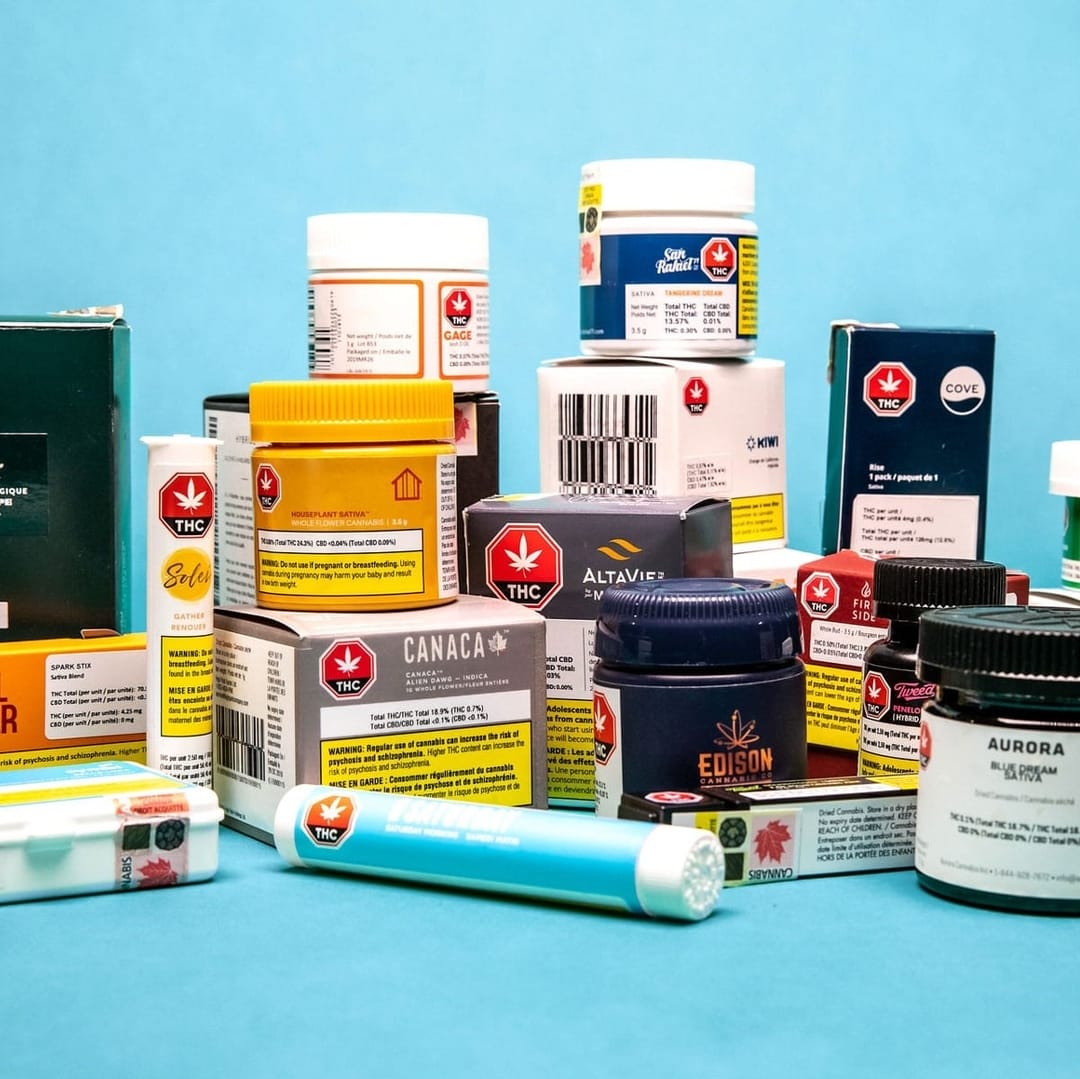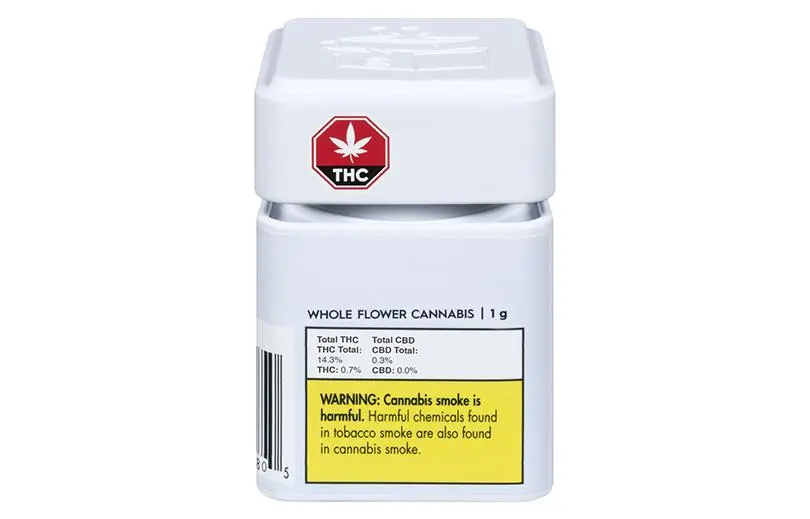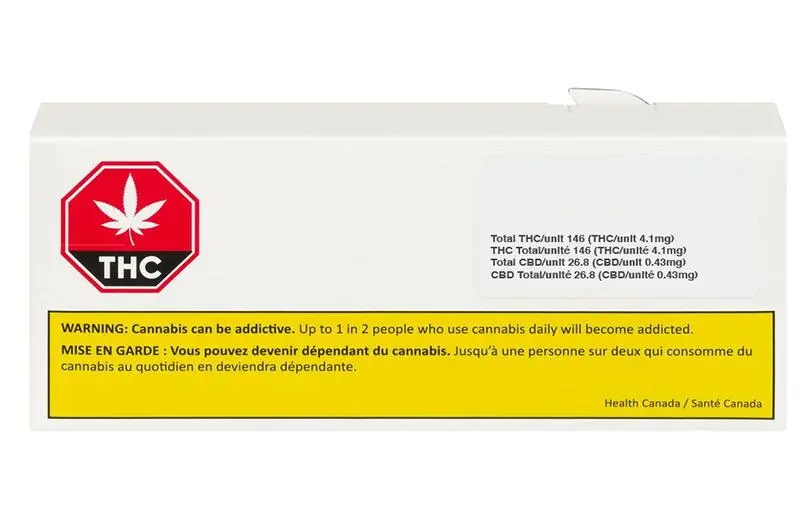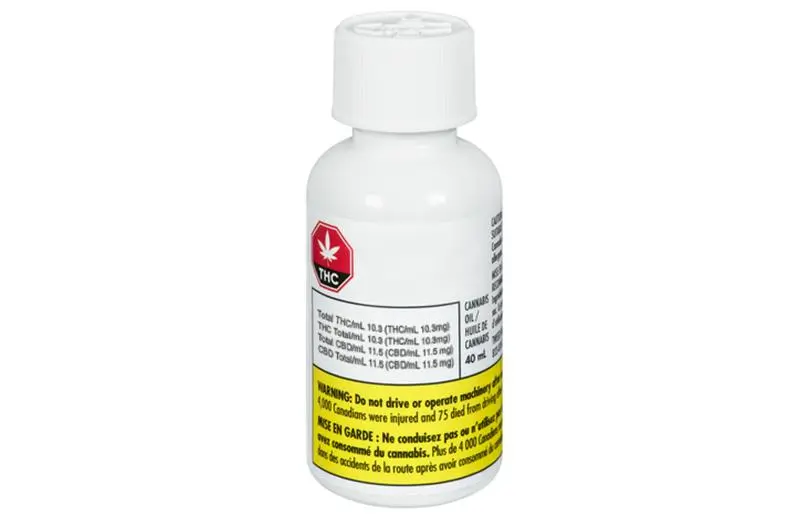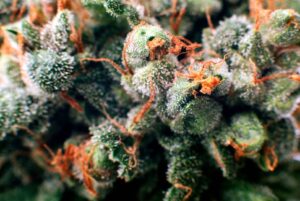When purchasing cannabis in Ontario, it is important for consumers to be familiar with product labeling to help ensure they are making suitable choices. The following article discusses the information found on the labeling of cannabis products sold in Ontario.
Universal Packaging:
In the United States, brands, stores, and states have different cannabis packaging requirements and rules, making it potentially challenging for customers to understand what they are consuming. To circumvent such issues, Health Canada has established strict rules for how recreational cannabis products must be packaged and labeled. This standardized system helps consumers better understand the cannabis products they are purchasing by providing them with key information.
The Main Components of a Cannabis Product Label in Ontario:
All packaging for oils, edibles, capsules, vape cartridges, pre-rolls and flowers contain at minimum a number of the same standardized points of information. Below is an overview of each point of information and why it is essential to the consumer.
Strain Type:
Cannabis is often classified according to three main categories: sativa, indica and hybrid. Although not necessarily supported by current research, there is a common belief among cannabis users that the strain determines the type of experience one can expect. Many adhere to the idea that sativa strains are more activating while indica strains are more sedating. Ontario cannabis labels may indicate the strain category and even the specific strain name.
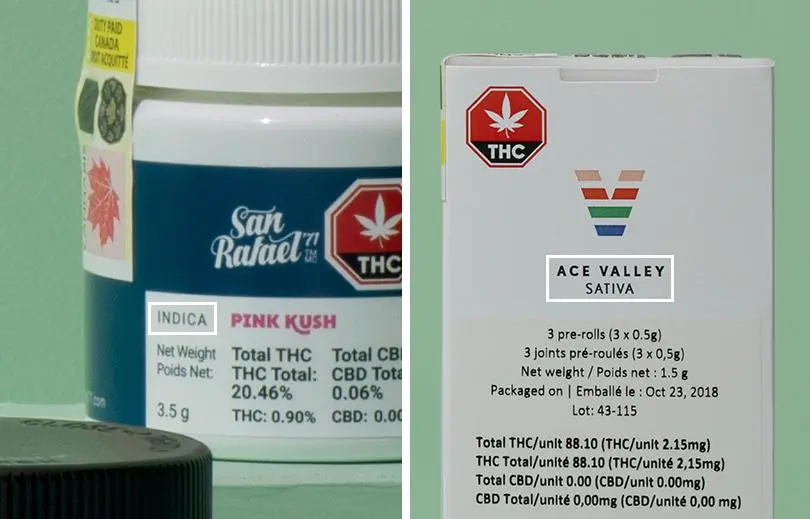
Important Dates:
Cannabis products sold in Ontario list up to two dates. The first is the packaging or manufacturing date, and the second is the expiration date. The packaging date is always listed and simply reflects the date that the product was sealed and packaged by the licensed producer. It should not be misconstrued to mean the harvesting date. Depending on company specific practices, there can be substantial lag time between when a cannabis product was harvested and when it was packaged for sale.
Health Canada does not mandate the listing of expiry dates on cannabis labeling. As such, it is seldom listed by licensed producers. Cannabis products can diminish in their potency as they age beyond their expiry date. If the seal is maintained, cannabis dried flower should only lose up to 15% potency in the first year. It is important to avoid both direct sunlight exposure and excess heat, as both will hasten the degradation of the cannabis flower, thereby causing THC to convert to CBN, which in turn leads to a more sedating experience.
Product Weight:
Product weight is fairly straightforward with the exception of labeling for dried flower. Health Canada allows for up to ten percent variance for products containing under two grams and up to five percent variance for products containing over two grams. Therefore, with certain dried flower products, the weight listed on the labeling may not exactly represent the weight of the cannabis within the packaging.
THC and CBD Content:
Cannabinoids such as THC (Tetrahydrocannabinol) and CBD (Cannabidiol), which are in large part responsible for the effects experienced during cannabis consumption, become activated when heated past certain temperatures, in a process known as decarboxylation. The psychoactive effects of cannabis are essentially dependent upon the decarboxylation process. Cannabis in its natural state has very little active cannabinoid content.
Recreational cannabis sold in Ontario lists two sets of numbers with respect to the THC and CBD content on the labeling of a given product. The first number, shown as “THC” and/or “CBD”, discloses the active cannabinoid content prior to decarboxylation. This would reflect the active cannabinoid content at the time of purchase. The second number, shown as “Total THC” and/or “Total CBD”, communicates the respective cannabinoid content after decarboxylation, thus when it is actively being consumed.
The differentiation between the latter two sets of numbers is more relevant to dried flower and pre-rolls. Edibles, oils and capsules are sold with the cannabinoids already present in their active state.
It is important to note that the cannabinoid content can be expressed differently according to the type of cannabis. Whereas dried flower products often include cannabinoid content as a percentage of total weight, with pre-rolls, vape cartridges, oils and capsules the cannabinoid content is expressed in total milligrams per unit. As an example, a package listing two hundred milligrams of THC in a one gram pre-roll would be equivalent to twenty percent THC.

Warning Labels:
Similar to certain other recreational or medicinal products, warning labels are mandatory. Cannabis products sold in Ontario are packaged in child-safe and tamper-proof packaging. Products containing THC include health-related warning labels to indicate the presence of THC and its potential intoxicating effects. Health Canada also includes a cautionary notice that adolescents are at greater risk of harm from cannabis. They do this to remind consumers to keep products safe from children of all ages, including teenagers.
Licensed Producer Information:
The name of the licensed producer and the product lot number must be present on each cannabis product label. This enables purchasers to both contact the licensed producer and to be able to refer to the specific batch from which their product originated. The lot number is important for quality control measures.
This concise overview of Ontario’s cannabis labeling provided a brief introduction into understanding the information conveyed on these labels. It is important for consumers to understand the information provided with their cannabis products so that they can be empowered to make more informed decisions about which products are best suited to their desired experience.

© Kanab Inc. – Kanab Inc. is a Toronto based cannabis retail company that honors the historical significance and uses of the cannabis plant across cultures and civilizations. Kanab has now opened its first cannabis dispensary at the intersection of Don Mills Road and York Mills Road in North York region of Toronto, Ontario (South of 401, West of 404 / Don Valley Parkway, and East of Leslie). For more info, please visit: kanab.ca
